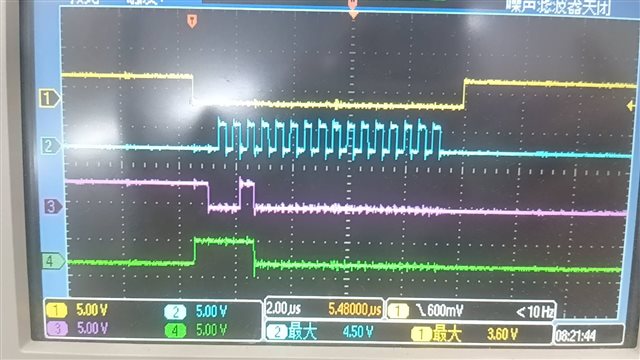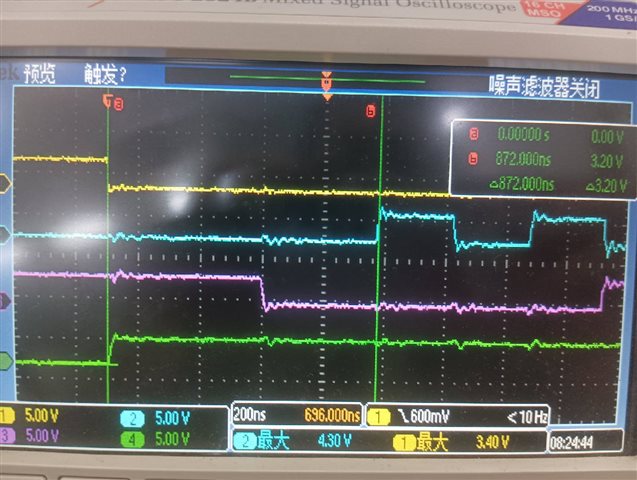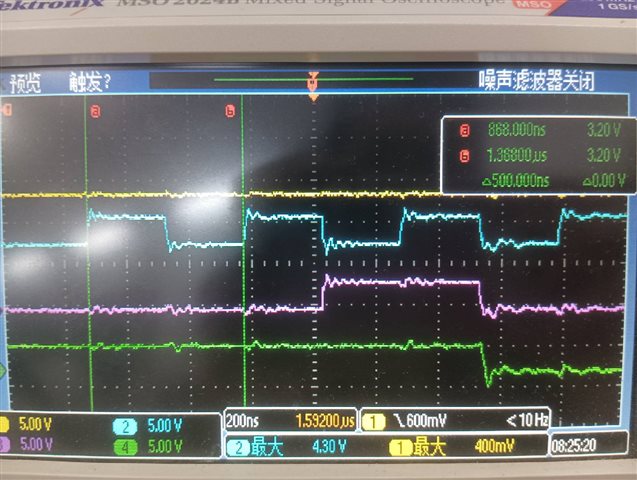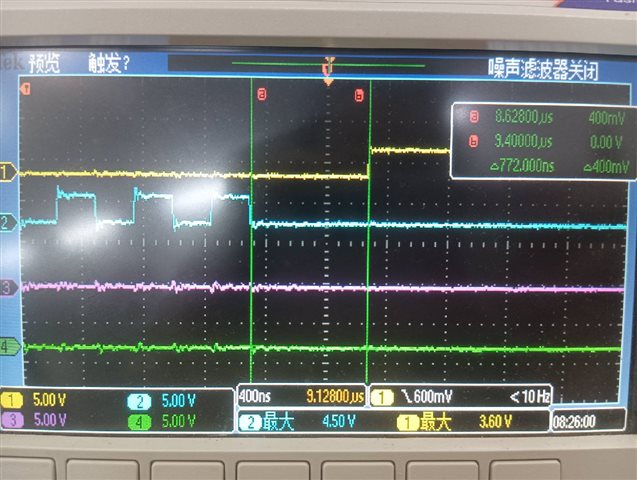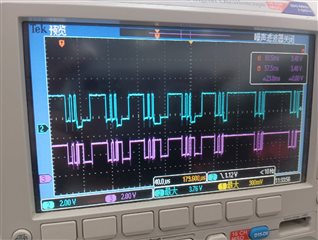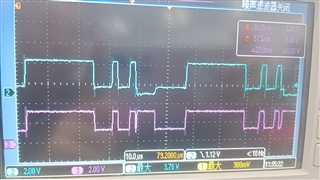Hi team,
The customer uses the TCAN1145 chip. After powering on, the MCU sends a read 10h register instruction to TCAN1145. The value of the first byte 50h register returned by 1145 is 0xE0, and the second byte value is 0. The same goes for reading other registers (51h, 52h, etc.). Please help me find out why the real register value cannot be read (that is, the second byte is always 0), thank you
Note: SPI setting CPOL: 0 CPHA: 0 The rate is less than 4M
The attachment is an intercepted waveform picture. The line sequence from top to bottom is CS CLK SDO SDI (MCU side).
